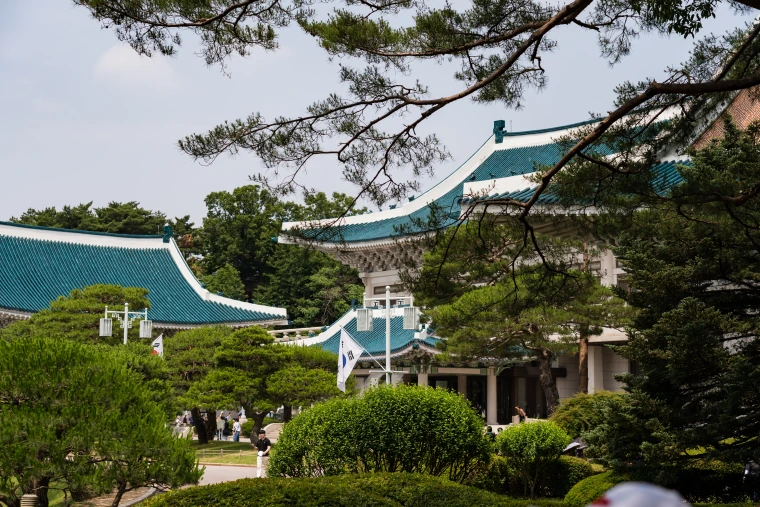Martial Law in Twenty-First Century South Korea? (Part I)
by Drs. Scott Gregory & Sandra Park • Jan 20, 2025 • 6-min read

Many South Koreans today have never experienced martial law in their lifetime until last month. I think for many people, Dec 3rd must have felt like a "Is this actually happening here?" moment.
Background
In December 2024, President Yoon Suk Yeol of South Korea declared martial law to bypass political gridlock with the National Assembly. The surprising move, which shocked both the public and the international community, sparked widespread protests and calls for impeachment. This incident has reignited debates about South Korea’s history with authoritarianism and its democratic progress since the 1980s. In this post, we explore the context of Yoon’s decision and its impact on South Korean society today.
SG (Scott Gregory): For those who haven’t been following closely, what has been happening in South Korea over the past two months?
SP (Sandra Park): At the moment, South Korea’s president Yoon Suk Yeol has been impeached and formally arrested on charges of insurrection for his declaration of martial law last month. Around 10:30pm on December 3rd, 2024, Yoon shocked South Korean citizens, allies, and the world by declaring martial law (translated transcript of speech) over the country in an unscheduled press conference that was broadcasted over national television. Yoon had been in a political gridlock with the opposition-dominated National Assembly, and he seemingly tried to bulldoze through political opposition by resurrecting a draconian legal instrument that had worked for South Korea’s authoritarian leaders in the past before the country underwent democratization in the 1980s and early 1990s.
However, this move galvanized Opposition lawmakers and an overwhelming segment of South Korean society as well as Koreans overseas.
Many lawmakers acted quickly by rushing to the National Assembly building to vote down the martial law decree, with ordinary citizens amassing outside of the building in protest of the decree. Captured scenes from these hours show lawmakers and protestors confronting martial law troops storming the building under orders from Yoon to “drag out” troublesome Assembly members. I am sure by now, many have seen the videos and photographs of troops smashing the windows to enter the building, and lawmakers and their aids using furniture as a barricade to ensure the passing of the vote have circulated widely now. In one confrontation that took place outside of the building, Ahn Gwi-ryeong, a spokesperson for the opposition Democratic party, went viral for her courageous act of defiance. Captured on video, an enraged Ahn can be seen grabbing the muzzle of a soldier’s rifle and demanding to know, “Don’t you feel ashamed?!”
While an apology came from Yoon a few days later, not long after, Yoon was quick to defend his decision as a legitimate use of his executive powers. Now, Yoon is denying giving orders for the military to “drag out” lawmakers.
SG: How has life on the ground been affected, in Seoul and in the rest of the country?
SP: Many South Koreans today have never experienced martial law in their lifetime until last month. I think for many people, Dec 3rd must have felt like a “Is this actually happening here?” moment. For those who experienced authoritarian rule, I think it was a reminder that South Korea’s democracy cannot be taken for granted.
Of course, South Korea today is not the South Korea of the 1960s, 70s, or even 80s. Yoon’s martial law lasted a total of 6 hours, with the Minister of Defense resigning soon after. So, unlike previous decrees, the immediate threat of emergency martial law was neutralized rather quickly, and many ordinary, while stunned, were still going on with their everyday lives.
What has been interesting to see is how this has reignited a vibrant culture of street protests that South Korea has come to be known for. Since the decree, protests against Yoon have been held in Seoul, Daejeon, Busan, and other cities, with participation by individual citizens and more organized voices from labor unions and major religious bodies.
But what’s catching a lot of people’s attention right now is the infusion of K-Pop into the protests. Protestors, many of them young women, have been singing and dancing to popular K-Pop songs—while chanting for Yoon’s impeachment. You can also see people waving the colorful light sticks that are fixtures at idol concerts. If you watch the videos online, you’ll hear songs by “second-generation” K-Pop wave artists like Girls’ Generation and G-Dragon and recent hits like APT. by Rosé and Bruno Mars. This remixing of old and new protest cultures is truly fascinating.
I would say this is the sunnier face of popular responses to Dec 3rd.
Something to keep in mind here is that while we are seeing an overwhelming condemnation of Yoon’s actions, South Korean society is still deeply divided along old and new ideological fault lines. Just as we saw in 2016–2017 with supporters of Park Geun-hye, Yoon’s predecessor who was also impeached, conservative South Koreans are also taking to the streets to rally around Yoon who they see as unjustly persecuted. At these pro-Yoon rallies, you will notice prominent displays of the South Korean and American flags, supported with a particular moral intensity by evangelical Christian churches and leaders who are devoutly anticommunist. This intersection of religion and politics in Cold War South Korea is actually something I am teaching in my Religion and the Korean Peninsula course this semester.
(To be continued in Part II)

